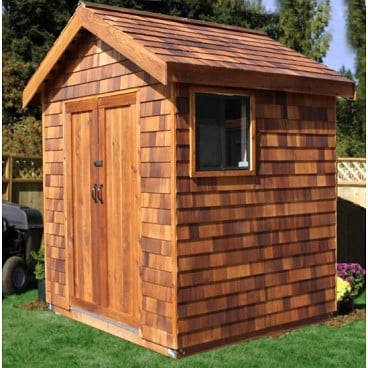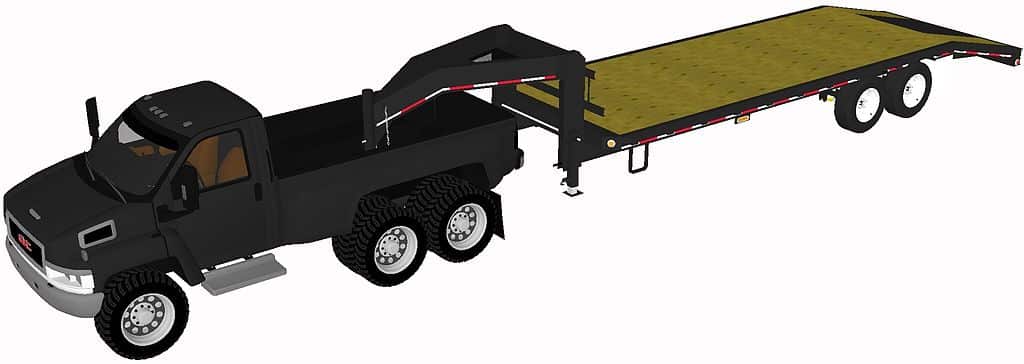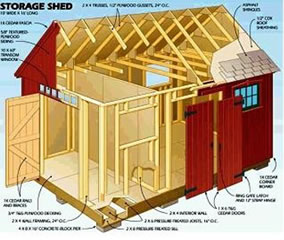Introduction
You’ve probably been told that moving a shed is a big, daunting task. But what if we told you that there are some secrets to move a shed with ease?
This article will share tips and tricks to make moving your shed a breeze. Whether you’re hiring movers or doing it yourself, we’ll show you how to make the process as smooth and stress-free as possible. So read on for our top tips on how to move your shed like a pro!
Why Move Your Shed

You may be wondering if it’s essential to move your shed. After all, it’s not like you use it all that often. But you may not realize that there are many benefits to moving your shed—especially if you do it the right way.
Here are just a few reasons why you may want to consider moving your shed:
– You can free up some much-needed space in your yard.
– A new location can give your shed a new lease on life.
– It’s a great way to get rid of unwanted items.
– You can save money on storage fees.
When to Move a Shed
A few critical times when it’s best to move your shed.
If you’re moving, for example, it’s much easier to take your shed with you than to try to leave it behind. If you’re driving a long distance, it might be worth considering hiring a professional mover to help you get your shed from point A to point B.
Another time when it’s a good idea to move your shed? If you’re renovating your property and need to remove the shed from the premises temporarily. This can be a great solution if you don’t have much space on-site or need to level the ground before starting your renovation project.
Prepare A shed For Moving.
Before you can move your shed, you need to assess the movable condition of the shed.
Is the shed structurally sound, damage or pests, & Is the roof in good condition? If it’s not in good condition, it might not be worth moving.
Once you’ve determined that the shed is movable, it’s time to start emptying it. Remove everything from the shed and put it in a safe place where you can easily access it later. This includes tools, equipment, and anything else in the shed.
If you’re not prepared to move the shed immediately, you can store these items safely until you are ready. Just label everything clearly, so you don’t lose anything in the shuffle.
Now that the shed is emptied, it’s time to prepare it for moving. Wipe down all surfaces to remove any dirt or dust. Make sure that all locks and hinges are in good condition and secure.
If any windows or doors need repairs, fix them now, so they don’t break during transport. Finally, pack loose items inside the shed, so they don’t move around during transit.
Moving A Shed
You’ve got the prep work down, and now it’s time to move your shed! The first step is lifting your shed off the ground—you could try lifting it by hand, but that could be pretty tricky since it can easily weigh hundreds of pounds. We recommend using a forklift or hoist to lift your shed and place it on some planks or wooden pallets.
Once you’ve lifted the shed onto the pallets, loading it onto a trailer or flatbed truck is the next step. For this step, you’ll want to secure it properly with rope and straps so that your shed doesn’t shift or move while in transit.
Transporting the shed is another essential part of the process—you don’t want to damage the shed during transit! Make sure to drive slowly and carefully on a smooth road to reduce the impact on the structure of your shed. Take corners slowly and try to avoid any potholes if you can!
Safety Measures To Follow When Moving A Shed
It’s essential to take the proper precautions when moving your shed. This is especially important if you’re driving it a long distance, as many more risks will be involved. To ensure safety, secure the shed properly with ropes or straps before transporting it. Also, make sure to remove any sharp objects hanging off the shed that could cause damage to other vehicles on the road.
If you’re planning on dismantling your shed, you must have a plan for reassembling it correctly at its destination. Ensure all screws and bolts are well-oiled and easily accessible so they can be reattached quickly and efficiently. It’s also wise to get help from an extra pair of hands to hold the roof or walls together while working on them. Lastly, ensure you know your way around essential tools such as saws and screwdrivers before attempting a move.
Cost-saving Tips: Move A Shed With PVC Pipe

You don’t have to break the bank to get your shed from Point A to Point B. Here are some cost-saving tips that you can use while moving your shed like a pro:
Move your sheds with PVC pipes. Not only will you save money, but you’ll be able to transport your shed much more quickly. This is especially true if you’re moving it across a paved surface since the PVC pipes will act as rollers and make it easier for you to carry heavier structures.

- Consider using a Shed Mule to move your shed for you. Shed Mules are specialized devices built explicitly for moving sheds and have been used by professionals for years. The cost of renting one is much less than hiring movers or renting a truck and trailer.
- If you have access to an appropriate vehicle, try moving your shed with a truck and trailer combination. This affordable option lets you do the job yourself and control where and when the move takes place, although it takes significant skill and might not be appropriate if there’s trickier terrain involved (e.g., stairs or narrow pathways).Moving a Shed across your Backyard
If your shed is relatively lightweight or you’re moving it a few feet away in your backyard, you could try doing it yourself. But no matter how light or heavy your shed is, it’s not an easy task and requires careful planning.
Firstly, make sure you’ve got enough people to help you. It might be tempting to try and move the shed alone, but more hands make for lighter work! If that’s not possible, use a wheelbarrow or trolley with wheels to help bridge the gap between where your shed currently stands and its new home.
Once you’re ready to move the shed, use furniture sliders as a base underneath the floorboards of your hut to help it roll on its side more easily. This way, you won’t have to lift it off the ground each time you want to shift its position. And to protect your grass from taking too much damage from the debris left behind by your moving process, place a tarp over any used pathways.
Going through this process may sound intimidating at first, but with these helpful tips and tricks, I’d say that you’re well on your way to being a Pro at moving sheds like one!
Common Challenges and Solutions When Moving A Shed

You might be wondering: What challenges will I face when moving my shed? We’re here to tell you that you will likely face a few hurdles.
The most common issues include time constraints, finding the right equipment and routes, navigating obstacles, and lack of workforce.
To overcome these issues and make the moving process go more smoothly, it’s essential to plan and equip yourself with the necessary tools. Make sure you know what you’re getting yourself into before taking on the task of moving a shed. Rent or borrow ground-level equipment such as cranes, strap hoists, or flatbeds to help move your shed quickly.
Utilize available pathways—whether trails or streets—to get your shed from Point A to Point B without issues. And if you don’t have enough workforce at home, don’t worry—it never hurts to ask for help from family and friends or even hire professional movers who can make your job easier and less stressful.
Hiring a Professional Shed Moving Company
If you decide that a pro is a way to go, you don’t want just any shed movers. You want people who know what they’re doing and can help you get the job done without a hitch. Here are some tips for choosing a shed moving service:
- Make sure they have experience with large structures, as this will help them determine if the system can be moved safely or needs to be disassembled.
- Look for reviews from other customers to ensure you’re getting quality service.
- Ask how long it will take them to move your shed and whether they are insured in case of damage during the process.
- Ensure their quotes include the cost of moving materials such as plywood sheets, skids, and straps for securing your structure during transit.
Hiring a professional shed moving company can save you time and energy, so take some time to research your options and choose the best one for your circumstances.
Maintaining the Shed
Now that you’ve successfully moved your shed, it’s important to remember to maintain it in its new location. First, check the integrity of the shed by double-checking the doors and windows to ensure they open and close correctly. You may also want to wax the wood to protect it from weather damage.
Next, inspect the shed for signs of damage sustained during the move. Make necessary repairs, such as nailing loose planks or removing broken hinges. If you’re having trouble with these tasks, a professional carpenter may be able to help.
Finally, consider using a tarp or other waterproof material to protect the shed from moisture and inclement weather. This will extend its lifespan and help keep everything safe during storms or seasonal changes.
Q: How do I prepare my shed for moving?

A: Before moving your shed, you should clear it of all items, secure loose parts, and make sure it is structurally sound. If necessary, disassemble the shed into smaller parts to make it easier to transport.
Q: What equipment do I need to move a shed?
A: You will need a set of rollers, a few firm friends or family members to help, and possibly a shed-moving mule or truck and trailer if you are moving the shed a long distance. You may also want to invest in moving straps or ropes to help secure the shed during transport.
Q: Can I move a shed on my own, or do I need professional help?
A: It depends on the size and weight of your shed and the distance you are moving it. If you have a small shed and a few strong helpers, you can move it on your own. For larger sheds or longer distances, it may be best to hire professional shed movers.
Q: How much does it cost to move a shed?
A: The cost of moving a shed will vary depending on several factors, such as the size of the shed, the distance it is being moved, and whether you are using professional movers or moving the shed yourself. On average, moving a shed can range from a few hundred to several thousand dollars.
Q: Can I move a shed to a new house or location?
A: You can move a shed to a new house or location, but you should check with local authorities to ensure that it is permitted at the new site and that it complies with local building codes or regulations.
Q: How do I lift the shed to move it?
A: To lift the shed, you will need a set of rollers, strong helpers, and a system for raising and securing the shed. If you have a shed moving mule, it can be used to lift and transport the shed. If not, you may need to use ropes or straps to help secure the shed as you roll it onto the rollers.
Conclusion
Moving a shed isn’t easy, but it can be done with the right knowledge and equipment. Remember to take your time, use the right tools, create a plan, and ensure you have enough help–you’ll be sure to succeed in this endeavor. With these tips and tricks in mind, you’re ready to make your move successful!

